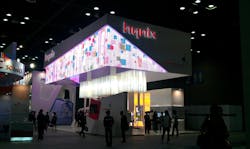SK Hynix, the world’s second largest memory chip maker, plans to build a factory in South Korea to meet the increasing demand for its NAND flash memory. Last week, the chip manufacturer said that it would invest around $1.8 billion in the construction.
The new plant will primarily make NAND chips used inside smartphones and personal computers for everything from storing photographs to playing videos. But like other memory chip makers, SK Hynix is increasingly tailoring its chips for manufacturing equipment and automobiles. Its customers include Apple and Sony.
The memory market has been improving with growing demand for faster processing power and greater storage in mobile devices and computers. Most major chip makers in the field are pouring vast sums into devices with multiple layers of semiconductors, also known as 3D NAND, which has more capacity than single-layer chips.
One question facing the industry is whether the three-dimensional chips can be produced as cheaply as planar NAND. Companies like Toshiba and Samsung are devising chips with as many as 64 memory layers, but none have said when their devices might become comparable to NAND in cost per bit.
The new plant, which will be located in Cheongju, South Korea, will begin construction in August 2017 and is scheduled to be completed in 2019, the company said in a statement. SK Hynix also plans to convert parts of its M14 fab in Icheon, South Korea, to produce 3D NAND. The factory, which cost $12.7 billion to build, opened last year.
“The new fab to be constructed in Cheongju will become a part of our key production facilities to gear up for the upcoming fourth industrial revolution,” Sung Wook Park, chief executive of SK Hynix, said in a statement, referring to the process of digitizing and connecting factory equipment to make them more efficient.
SK Hynix is also known for making dynamic-random access memory, or DRAM, which is used in mobile devices and computers to help run multiple programs simultaneously. The chips contrast from NAND in that their information can be accessed faster. But unlike NAND, the data vanishes when power is lost.
In recent years, SK Hynix has not always had the luxury of investing into its manufacturing output. Only three years ago, it was struggling to rebuild it. In 2013, a fire broke out at its plant in Wuxi, China, which today is responsible for around half of the company’s DRAM production. The conflagration took the plant out of commission from September to November, causing prices for DRAM to increase sharply.
That factory is also getting an update. The company said last week that it will undertake an almost $800 million expansion of its Wuxi factory, which was built in 2006. The expansion will make room for additional equipment used in the increasingly complex process of making DRAM chips.
Correction: December 29th, 2016. An earlier version of this article misstated the amount of money that SK Hynix, the world's second largest memory chip maker, would invest in a new fab. It is investing around $1.8 billion, not $2.7 billion. $2.7 billion includes additional money that the company is investing in a DRAM fab in Wuxi, China.
About the Author
James Morra
Senior Editor
James Morra is the senior editor for Electronic Design, covering the semiconductor industry and new technology trends, with a focus on power electronics and power management. He also reports on the business behind electrical engineering, including the electronics supply chain. He joined Electronic Design in 2015 and is based in Chicago, Illinois.


